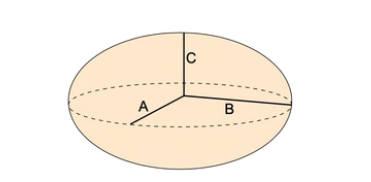 Home
Home
 Back
Back

Definition: This calculator determines the volume of an ellipsoid based on the lengths of its three semi-axes (\( a \), \( b \), \( c \)). An ellipsoid is a three-dimensional geometric shape where each cross-section is an ellipse, often described as a stretched or compressed sphere.
Purpose: It assists in calculating volumes for applications in geometry, physics, and engineering, such as determining the capacity of ellipsoid-shaped containers or modeling objects in scientific studies.
The calculator uses the following formula:
Unit Conversions:
Steps:
Calculating ellipsoid volumes is crucial for:
Examples:
Q: What is an ellipsoid?
A: An ellipsoid is a three-dimensional shape with three unequal semi-axes, where all cross-sections are ellipses. If all semi-axes are equal, it becomes a sphere.
Q: How does an ellipsoid differ from a sphere?
A: A sphere has equal radii in all directions (\( a = b = c \)), while an ellipsoid has three distinct semi-axes (\( a \), \( b \), \( c \)), allowing it to be stretched or compressed.
Q: Why is the volume formula \( \frac{4}{3} \pi a b c \)?
A: The formula generalizes the sphere’s volume (\( V = \frac{4}{3} \pi r^3 \)) by multiplying the semi-axes \( a \), \( b \), and \( c \), accounting for the ellipsoid’s shape.